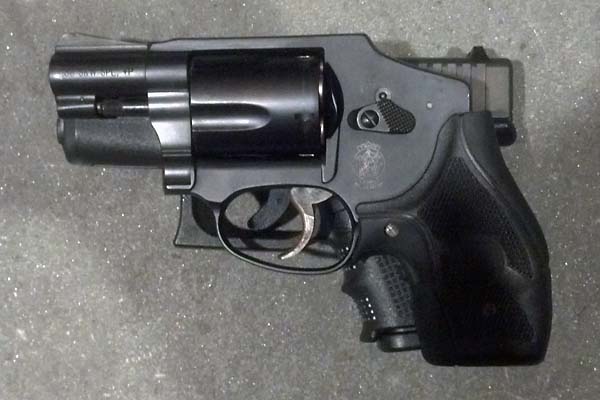We’re too lazy to set up a proper shared byline, but this is a collaborative work, and both our names are on it. – P. & F.
The Kasarda drill is stupid.
There, we said it. The Kasarda drill is a fixture of the sort of action matches featured on Ian and Karl’s Inrange channel down in Arizona. Briefly, it involves a stage where there is one (1) steel silhouette-type target at the end of a bay. The shooter has to cover a distance by repeatedly tossing a heavy kettlebell, and scoring a hit on the target from wherever the kettlebell lands. After the shooter has gotten the kettlebell across some predetermined line and scored a final hit, the drill is complete.
We hate this drill. We think it is profoundly stupid. Here’s why.
Karl loves to gripe about “practicality,” or the lack thereof in matches not designed in accordance with his preconceived notions. He doesn’t like raceguns. He doesn’t like compensators. Et cetera. And that’s fine. Open division isn’t for everyone. Fancy race guns aren’t for everyone. That’s why there are other divisions. Of course, he’s also griped about the 180 safety rule, lack of required use of cover, and other rules designed to make rules enforcement easily understandable by shooters and ROs.
And yet the Kasarda drill is also a massively impractical, completely artificial drill. It bears exactly zero resemblance to anything actually done by any law enforcement officer or soldier ever. Literally none, unless you want to completely abstract everything away and think of it as “physical thing plus shooting thing.” Let’s break that down.
First, the physical. This is not drag your buddy, or carry ammo, or lug a “support weapon”. It’s fling a heavy kettlebell. And they have to dictate how you do it, because if you do it wrong, you’ll screw up your shoulder or your back and be out of the match. And while the folks at Inrange preach about accessibility, there are plenty of folks who are going to look at a big ol’ 62 pound (or whatever weight) kettlebell and say “Nope!”, and I can’t seem to find the place where Inrange tells you how to accommodate those with bad backs. Anyway, matches near me have plenty of middle aged folks, and making them get into shape before they come to my match is going to result in a very empty match with not a lot of fees to cover my expenses. Likewise, being perceived as requiring people to get into shape before they come out and play at my match is also going to result in a very empty match.
If the point is “exhaustion and then shoot”, there are other ways to do it that are more accessible and less potentially injurious. Carry something heavy (cops and soldiers might do this). People can drag a heavy weight if they can’t actually carry it. Or, you could have people run a lot (cops and soldiers might do this too). Heck, the running challenge automatically adjusts to fitness levels if you do laps around a bay or something. You’d just have to make the par time work. And hey, it even reasonably simulates a real-world incident. Check out this video from Active Self Protection.
Second, the shooting. Seriously, just one plate? Really? No transitions? Not even a mandatory reload? This “drill” feels like someone is trying to inject a bit of shooting into Crossfit. If I want to crossfit, I’ll hit the gym. I’m on the shooting range. Can I at least have an interesting shooting challenge?


 Unlock with Patreon
Unlock with Patreon